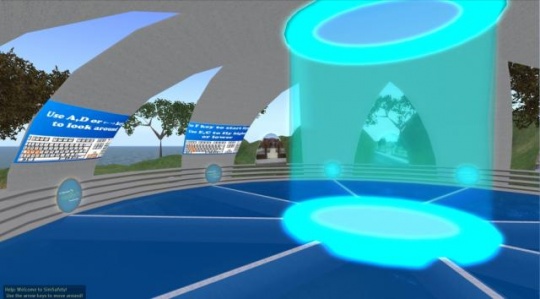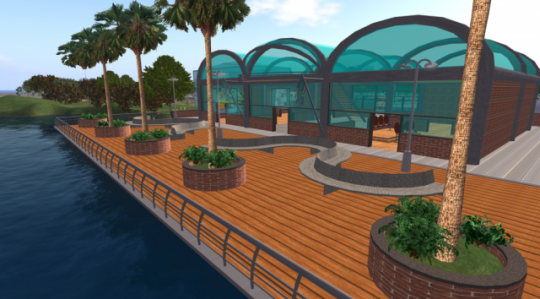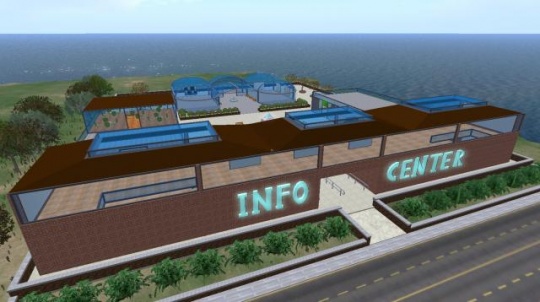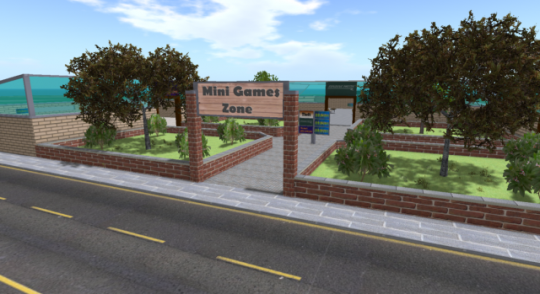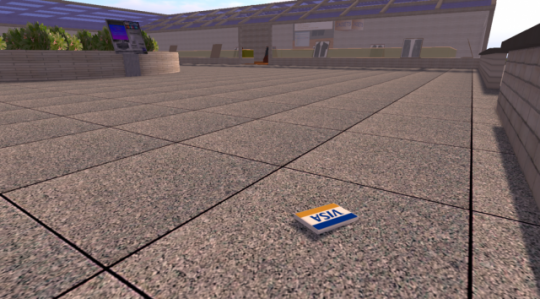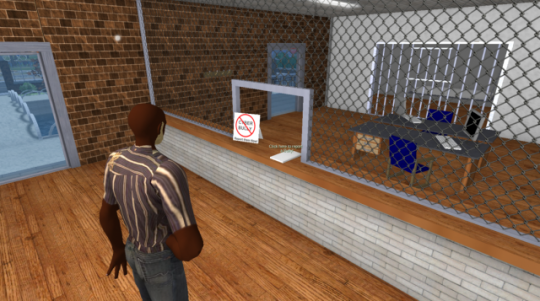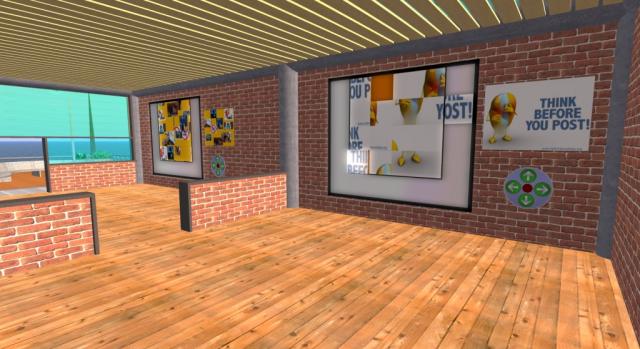SimSafety –Flight simulator for Internet safety: Difference between revisions
No edit summary |
No edit summary |
||
| Line 2: | Line 2: | ||
{{ | {{Project | ||
| | |acronym=Simsafety | ||
|project_title= | |logo=Simsafety_logo1b.jpg | ||
| | |project_title=Flight simulator for Internet safety | ||
|contract_number=143689-2008-LLP-GR-KA3-KA3MP2008 | |||
| | |funding_period=Jan 2009 - Dec 2010 (24 mo) | ||
| | |coordinator=[[Elena Aristodemou]]<br>[[Yiannis Laouris]]<br> | ||
| | Michalis Xenos (Overall Coordinator) | ||
| | |funding_agency=European Union (Transversal KA3 ICT) | ||
| | |total_cost=€75,703.00 (CNTI Budget) <br> | ||
€645.015,00 (Total Budget) | |||
|website=www.simsafety.eu | |partners=[[Hellenic Open University]], Greece (contractor) <br> | ||
Research Academic Computer Technology Institute, Greece<br> | |||
[[Cyprus Neuroscience and Technology Institute]], Cyprus <br> | |||
University of Minho, Portugal <br> | |||
Transylvania University of Brasov, Romania <br> | |||
Dafnord Association, Finland <br> | |||
University of Hull, UK <br> | |||
|website=http://www.simsafety.eu | |||
}} | }} | ||
The Simsafety Project was funded under the European Commission’s Transversal KA3 - ICT programme. The project was coordinated by the [[Hellenic Open University]], Greece and was carried out in collaboration with partners from Cyprus, Finland, Romania, Portugal and United Kingdom. | |||
==Background== | |||
Research available indicates that totally unsupervised Internet use by children may bear dangers for themselves and their family. Although youngsters (in particular the older ones) express confidence regarding what is safe and/or unsafe and what precautions to take, it seems that certain children adopt more risky behaviour than they say and think. On the other hand, children declare that in case of problems they turn to their parents. But in actual fact, some (once more mostly the older ones) avoid resorting to this solution or limit it to the ones they perceive to be “serious” cases. Moreover, turning to “authority figures” such as teachers or the police is very seldom seen without reluctance. The project aimed at developing skills, concepts and knowledge that would facilitate the targeted groups to develop a new mentality, that of using the Internet safely. To achieve this aim, the targeted groups were involved in the actual application of all the information they received through various sources (e.g. safer internet centers), in ways that were not perceived as another school “lesson” or simply as “theoretical information”. Game playing is a well known method for its learning benefits. Therefore, the project confronted the issue of developing a “culture” in using the Internet Safely through the development of the Simsafety Game. | |||
==Products of the Simsafety project== | |||
The project partners: | |||
* '''The Project Portal''' has been launched early in the project with the dual aim of supporting project partner work and the online community of teachers, parents and pupils. It also serves as a means for broad dissemination of project products and results and as the “access point” for the game environment. | |||
* '''The Game Conceptual Design''' describes an innovative pedagogical approach in confronting a major issue these days, that of equipping current and future Internet users with the appropriate knowledge, skills and concepts in order to be able to take advantage of the outstanding potential of the Internet without running its risks. Communicative Action Theory and Social Theory were used, among others, as a framework to describe the potential of an educational Role-playing Game (RPGs) hosted on a Virtual Online Environment to provide opportunities for players to think critically and analytically about information and situations encountered, develop a clear understanding of potential risks through “trial and error” approaches and creatively apply the resultant new knowledge in real life. | |||
* '''The “SimSafety” game''' platform offers secure access to all game participants. They are exposed to potential risks, safely, through a series of predefined scenarios. Critical evaluation of information, experience acquired through observation, exchange of resources and argumentation between game players will be the successful game methodology that will guide players through a scoring process to high level ranking, award winning and thus change of game levels both in terms of complexity and difficulty. The game platform is internationalized (multilingual interface in English, Greek, Portuguese, Suomi, Romanian), will offer the possibility for saving and storing games played in a database, will record part of the scoring automatically (whereas part of the scoring will be a result of negotiation among game players), will keep players’ ranking and will allot reward-tools upon achieving specific scores, which will promote players to the next levels. | |||
* '''The System Manual''' will function in the form of “online help” and will guide players through the functionality of the gaming platform. | |||
* '''A list of Game Scenarios''' will be developed by the project team taking into account existing research on major potential online risks. Each game scenario will serve specific objectives. Game scenarios will emphasize child-parent and/or pupil/teacher cooperation introducing and/or reinforcing the role of the “Internet - chaperon” (i.e. a parent who acts as a chaperon to his/her child while involved in Internet activities). | |||
*'''A Game Scenarios Manual''' will guide players through the aim and scope of each game, scoring possibilities and award winning procedures. | |||
*'''The Implementation Reports from each partner country including examples of good practice''' will be used for dissemination and evaluation purposes of the project and will remain as a legacy to future players after the end of the project. | |||
*'''A number of recorded games''' will be available for future research as well as for dissemination and user training purposes. | |||
*'''The Dissemination material''' will consist of a multipurpose Brochure/Poster which will be available in English. Inserts to the poster in all partner languages will address the specific target groups of the project (teachers, parents, pupils). | |||
*'''A conference''' will be organized towards the end of the project. All people involved in the project will be invited to share their experience, ideas and thoughts about this venture. '''Conference proceedings''' will be an important legacy after the end of the project. | |||
*'''A Reaction Evaluation report''' will evaluate the impact of the project on teachers, pupils, schools, parents and external agencies. | |||
*'''A Final Summative Evaluation report''' will consider the totality and legacy of the project, its overall success and failures, the transnational partnership and its final deliverables and dissemination. | |||
*'''A community of teachers, pupils and parents''' who by in vitro experience will have gained know-how and awareness with regard to Internet safety issues and who will also be the legacy of the project forming a potential network of game players which will be supported to join other networks and thus continue its involvement in similar initiatives. | |||
==Simsafety - The Game== | |||
Simsafety utilized a second-life like environment to simulate dangers of the Internet. Some of the most important features that the game offers are: | |||
* Simulation of dangers in the form of mini-games within the environment (identity theft, explosive photos and we don't play with you) | |||
* Information through the Info center in all partner languages | |||
* Reporting Center (for cases where abuse or inappropriate behavior takes place) | |||
* Conference center (where meetings can take place virtually) | |||
* Navigation in the various building and the Simsafety park through flying, walking or teleport | |||
<br> | |||
<table width="100%"> | |||
<tr> | |||
<td> | |||
[[File:Simsafety_Welcome_Area.jpg|thumb|center|upright=1.8|alt=Simsafety Welcome Area.|Simsafety Welcome Area.]] | |||
</td> | |||
<td> | |||
[[File:Simsafety_Building.png|thumb|center|upright=1.8|alt=Simsafety Building.|Simsafety Recreation.]] | |||
</td> | |||
<td> | |||
[[File:Simsafety_Info_Center.jpg|thumb|center|upright=1.8|alt=Simsafety Info Center.|Simsafety Info Center.]] | |||
</td> | |||
</tr> | |||
<tr> | |||
<td> | |||
[[File:Simsafety_Mini_Games.png|thumb|center|upright=1.8|alt=Simsafety Mini Games.|Simsafety Mini Games.]] | |||
</td> | |||
<td> | |||
[[File:Simsafety_Visa.png|thumb|center|upright=1.8|alt=Simsafety Visa.|Simsafety Mall.]] | |||
</td> | |||
<td> | |||
[[File:Simsafety_Reporting.png|thumb|center|upright=1.8|alt=Simsafety Reporting.|Simsafety Reporting.]] | |||
</td> | |||
</tr> | |||
<tr> | |||
<td> | |||
</td> | |||
<td> | |||
[[File:Simsafety_SID_2010.jpg|thumb|center|upright=3.0|alt=Simsafety SID 2010.|Simsafety Puzzles.]] | |||
</td> | |||
<td> | |||
</td> | |||
</tr> | |||
</table> | |||
<br> | |||
==Dissemination== | |||
==External Links== | |||
*[http://www.simsafety.eu Official Website] | |||
*[http://simsafety-avatar.cti.gr/ Simsafety Game Entrance] | |||
Revision as of 02:42, 30 September 2011
|
The Simsafety Project was funded under the European Commission’s Transversal KA3 - ICT programme. The project was coordinated by the Hellenic Open University, Greece and was carried out in collaboration with partners from Cyprus, Finland, Romania, Portugal and United Kingdom.
Background
Research available indicates that totally unsupervised Internet use by children may bear dangers for themselves and their family. Although youngsters (in particular the older ones) express confidence regarding what is safe and/or unsafe and what precautions to take, it seems that certain children adopt more risky behaviour than they say and think. On the other hand, children declare that in case of problems they turn to their parents. But in actual fact, some (once more mostly the older ones) avoid resorting to this solution or limit it to the ones they perceive to be “serious” cases. Moreover, turning to “authority figures” such as teachers or the police is very seldom seen without reluctance. The project aimed at developing skills, concepts and knowledge that would facilitate the targeted groups to develop a new mentality, that of using the Internet safely. To achieve this aim, the targeted groups were involved in the actual application of all the information they received through various sources (e.g. safer internet centers), in ways that were not perceived as another school “lesson” or simply as “theoretical information”. Game playing is a well known method for its learning benefits. Therefore, the project confronted the issue of developing a “culture” in using the Internet Safely through the development of the Simsafety Game.
Products of the Simsafety project
The project partners:
- The Project Portal has been launched early in the project with the dual aim of supporting project partner work and the online community of teachers, parents and pupils. It also serves as a means for broad dissemination of project products and results and as the “access point” for the game environment.
- The Game Conceptual Design describes an innovative pedagogical approach in confronting a major issue these days, that of equipping current and future Internet users with the appropriate knowledge, skills and concepts in order to be able to take advantage of the outstanding potential of the Internet without running its risks. Communicative Action Theory and Social Theory were used, among others, as a framework to describe the potential of an educational Role-playing Game (RPGs) hosted on a Virtual Online Environment to provide opportunities for players to think critically and analytically about information and situations encountered, develop a clear understanding of potential risks through “trial and error” approaches and creatively apply the resultant new knowledge in real life.
- The “SimSafety” game platform offers secure access to all game participants. They are exposed to potential risks, safely, through a series of predefined scenarios. Critical evaluation of information, experience acquired through observation, exchange of resources and argumentation between game players will be the successful game methodology that will guide players through a scoring process to high level ranking, award winning and thus change of game levels both in terms of complexity and difficulty. The game platform is internationalized (multilingual interface in English, Greek, Portuguese, Suomi, Romanian), will offer the possibility for saving and storing games played in a database, will record part of the scoring automatically (whereas part of the scoring will be a result of negotiation among game players), will keep players’ ranking and will allot reward-tools upon achieving specific scores, which will promote players to the next levels.
- The System Manual will function in the form of “online help” and will guide players through the functionality of the gaming platform.
- A list of Game Scenarios will be developed by the project team taking into account existing research on major potential online risks. Each game scenario will serve specific objectives. Game scenarios will emphasize child-parent and/or pupil/teacher cooperation introducing and/or reinforcing the role of the “Internet - chaperon” (i.e. a parent who acts as a chaperon to his/her child while involved in Internet activities).
- A Game Scenarios Manual will guide players through the aim and scope of each game, scoring possibilities and award winning procedures.
- The Implementation Reports from each partner country including examples of good practice will be used for dissemination and evaluation purposes of the project and will remain as a legacy to future players after the end of the project.
- A number of recorded games will be available for future research as well as for dissemination and user training purposes.
- The Dissemination material will consist of a multipurpose Brochure/Poster which will be available in English. Inserts to the poster in all partner languages will address the specific target groups of the project (teachers, parents, pupils).
- A conference will be organized towards the end of the project. All people involved in the project will be invited to share their experience, ideas and thoughts about this venture. Conference proceedings will be an important legacy after the end of the project.
- A Reaction Evaluation report will evaluate the impact of the project on teachers, pupils, schools, parents and external agencies.
- A Final Summative Evaluation report will consider the totality and legacy of the project, its overall success and failures, the transnational partnership and its final deliverables and dissemination.
- A community of teachers, pupils and parents who by in vitro experience will have gained know-how and awareness with regard to Internet safety issues and who will also be the legacy of the project forming a potential network of game players which will be supported to join other networks and thus continue its involvement in similar initiatives.
Simsafety - The Game
Simsafety utilized a second-life like environment to simulate dangers of the Internet. Some of the most important features that the game offers are:
- Simulation of dangers in the form of mini-games within the environment (identity theft, explosive photos and we don't play with you)
- Information through the Info center in all partner languages
- Reporting Center (for cases where abuse or inappropriate behavior takes place)
- Conference center (where meetings can take place virtually)
- Navigation in the various building and the Simsafety park through flying, walking or teleport

